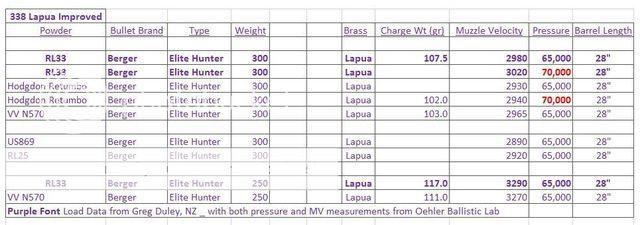I've only nitrided one barrel so far. This will be my second. But I'm an accomplished researcher on the topic.
What follows is preceded with "in my opinion". If done correctly, everything about nitride treating a barrel is positive with respect to barrel performance and barrel life - except you won't be able to find a gunsmith that will want to re-throat or re-chamber the barrel - because the nitride treatment will surface harden the steel and then dull/damage chamber reamers and throating reamers.
The primary benefits to nitride treatment are improved erosion resistance to the throat/bore, improved corrosion resistance to any chrome moly bore, less barrel fouling so the bore will foul slower and not need cleaned as frequently, and reduced bore to bullet friction which will typically allow a hand loader to realize an increased MV. As far as asthetics, a stainless steel barrel nitride treated looks like its been blued. Nitride treatment is more durable than Cerakote or any other surface coating, because it's chemically bonded into the steel, rather than layered on the surface of the steel like Cerakote or the other surface coatings. Nitride doesn't change the dimension of the treated bore. Nitride treated bores shoot the same as they did prior to nitride treatment.
You want all chambering work to be 100% completed prior to nitriding the barrel, and it's commonly recommended to break the new barrel in with anywhere from 5 to 30 bullets fired down the cleaned bore, using the fire one bullet and clean back down to bare steel method. This helps smooth out any chamber reamer tooling marks or other roughness in the bore prior to surface hardening the bore with nitride treatment. And here's the killer for your existing barrel. You don't want to nitride treat a bore that's had more than ~50 shots fired because the throat could already have fissures in it and nitriding after the throat has minute cracking in it just makes the fissures permanently worse.
Cerakote can be sandblasted off your barrel prior to nitride treatment, but if you've already got more than 50 rounds fired down the bore, let alone 150 or more, then I wouldn't take the risk of nitriding your existing barrel.
Others may think of something I've missed or forgotten. There's quite a bit of information available on the internet now on nitride treatment of barrels, actions, bolts, etc. Folks have been doing this for 5 or more years now and it's unlikely there's going to be many new surprises. If the nitride company doesn't know what they're doing, it is possible to damage a barrel with nitride treatment. So you want to use a company that's experienced in nitride treatment of rifle barrels.
What follows is preceded with "in my opinion". If done correctly, everything about nitride treating a barrel is positive with respect to barrel performance and barrel life - except you won't be able to find a gunsmith that will want to re-throat or re-chamber the barrel - because the nitride treatment will surface harden the steel and then dull/damage chamber reamers and throating reamers.
The primary benefits to nitride treatment are improved erosion resistance to the throat/bore, improved corrosion resistance to any chrome moly bore, less barrel fouling so the bore will foul slower and not need cleaned as frequently, and reduced bore to bullet friction which will typically allow a hand loader to realize an increased MV. As far as asthetics, a stainless steel barrel nitride treated looks like its been blued. Nitride treatment is more durable than Cerakote or any other surface coating, because it's chemically bonded into the steel, rather than layered on the surface of the steel like Cerakote or the other surface coatings. Nitride doesn't change the dimension of the treated bore. Nitride treated bores shoot the same as they did prior to nitride treatment.
You want all chambering work to be 100% completed prior to nitriding the barrel, and it's commonly recommended to break the new barrel in with anywhere from 5 to 30 bullets fired down the cleaned bore, using the fire one bullet and clean back down to bare steel method. This helps smooth out any chamber reamer tooling marks or other roughness in the bore prior to surface hardening the bore with nitride treatment. And here's the killer for your existing barrel. You don't want to nitride treat a bore that's had more than ~50 shots fired because the throat could already have fissures in it and nitriding after the throat has minute cracking in it just makes the fissures permanently worse.
Cerakote can be sandblasted off your barrel prior to nitride treatment, but if you've already got more than 50 rounds fired down the bore, let alone 150 or more, then I wouldn't take the risk of nitriding your existing barrel.
Others may think of something I've missed or forgotten. There's quite a bit of information available on the internet now on nitride treatment of barrels, actions, bolts, etc. Folks have been doing this for 5 or more years now and it's unlikely there's going to be many new surprises. If the nitride company doesn't know what they're doing, it is possible to damage a barrel with nitride treatment. So you want to use a company that's experienced in nitride treatment of rifle barrels.



